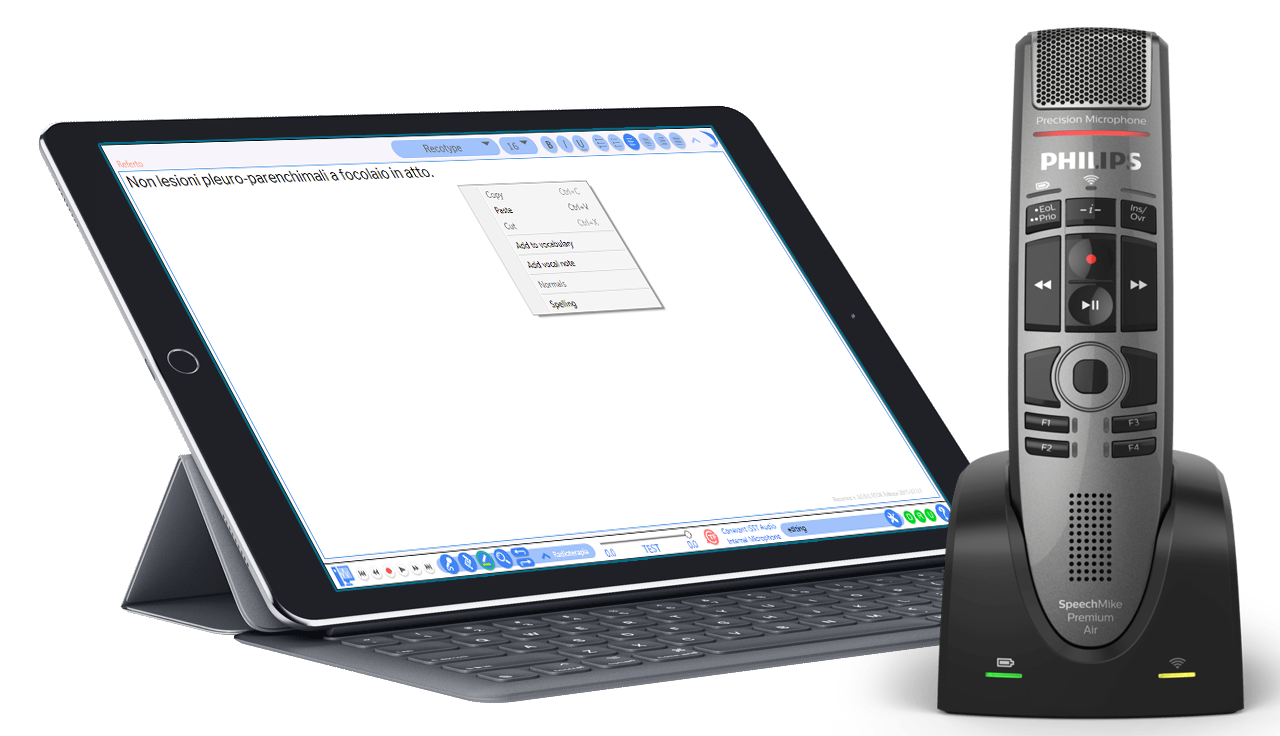Documentation in Healthcare
Handwritten reports are now almost unacceptable: archiving, consultation and readability itself are a problem. Speech recognition provides a way to produce, in real time, a readable and understandable report. Used with a management system it represents an opportunity not only to reduce costs, but to increase the quality of the reports themselves, decreasing the production and release time with a consequent significant increase in the quality of patient care.
Integrated into a RIS, PACS HIS, EMR, etc. system, speech recognition is the ideal combination of flexibility, convenience and efficiency. Recognition technologies and the hardware that support them continue to improve, making it an essential tool for healthcare professionals.
Speech recognition is able to optimize workflows in all hospital departments that produce documents in general (reports, reports, discharge letters, etc.) such as Radiology, Neuroradiology, Nuclear Medicine, Pathological Anatomy, Radiotherapy, Cardiology, Urology, Oncology, Surgery, all outpatient areas, etc.

Speech Recognition in Healthcare
The increase in prevention activities with the use of increasingly sophisticated technologies, associated with the continuous increase in the average age, will lead to an increase in diagnostic performance and proportionally in clinical documentation. Every document must be produced in electronic format, digitally signed and made available in the shortest possible time. Structured and shared data must be easily accessible and interpretable by every doctor, anywhere. Timeliness and quality will be the two fundamental requirements for reporting. Direct voice recognition will make it possible to absorb the increase in documentation produced, guaranteeing the best quality: any document or data entered digitally through the use of the voice will be immediately available to everyone.
"Pioneering spirit should continue, not to conquer the planet or space … but rather to improve the quality of life."




